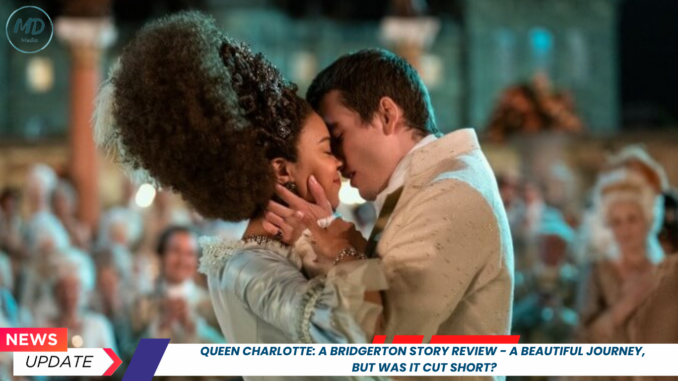
Queen Charlotte: A Bridgerton Story, which premieres May 4 on Netflix, faces a daunting challenge over its six-episode run. This new offering serves not only as an origin story for the delightfully imperious Queen Charlotte (Golda Rosheuvel) of Bridgerton but also as an origin story for that flagship show’s colorblind alternate universe of Regency England. That’s a tall order and one the miniseries can’t fulfill, despite its charms.
Chief among those charms is the cast, which includes the highly capable India Amarteifio as a believable younger version of Rosheuvel’s Charlotte. She’s a headstrong young woman married off against her will to the King of England, George III, played by Corey Mylchreest, who bears an unfortunate resemblance to Nicholas Hoult on The Great (unfortunate for him, because The Great is a much better show). Nevertheless, Mylchreest shines when he turns on the charm, and the series is at its absolute best when the two leads are bickering, bantering, and earning their Bridgerton bonafides (read: getting it on).
But Queen Charlotte has a larger scope than its compelling central love story and not much time to stuff everything in. There’s a Downton Abbey–esque servants’ subplot (chiefly Sam Clemmett and Freddie Dennis, playing the king’s and queen’s right hands), though if there was a Bechdel test for servants talking about things other than the people they serve, Queen Charlotte would fail miserably. Then there’s the young Lady Agatha Danbury (Arsema Thomas) scrabbling for status in a hostile society while enduring an absolutely dreadful overuse of her noggin hitting the headboard to demonstrate her loveless marriage to an awful older man (Cyril Nri). Game Of Thrones’ Michelle Fairley is entirely wasted in her own fruitless storyline of plotting against and around her son; she’s ostensibly powerful but not actually doing much at all besides introducing Charlotte to us.
Meanwhile, in Bridgerton’s “present,” older Charlotte, older Agatha (Adjoa Andoh), and older Violet Bridgerton (Ruth Gemmell) have their own plots that feel largely extraneous to the series. Occasionally, the parallels between younger and older Charlotte can be poignant, though the juxtaposition sometimes makes older Charlotte unlikable. And Agatha and Violet’s subplot seems tacked on to justify those actors’ presence in the series; ultimately they feel unnecessary and unresolved.
